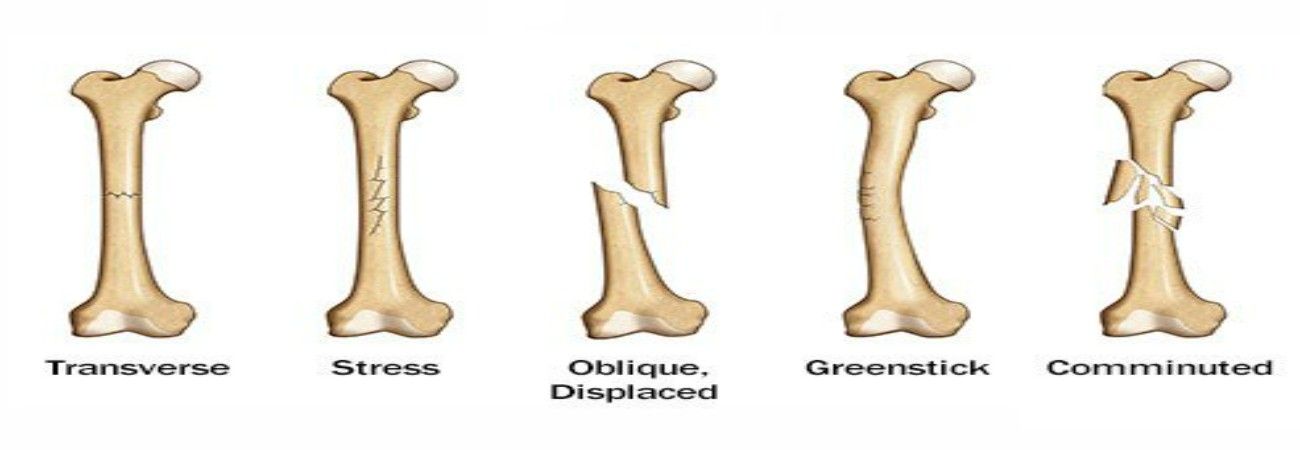People can shatter bones without realizing it, believe it or not. Studies have shown certain bones to be more susceptible to fractures than others. Swelling, difficulty in moving a joint, or pain that persists beyond a few days are all signs of a fracture. Bone fractures, also known as broken bones, affect millions of people each year.
These agonizing injuries commonly caused by automobile accidents, sports injuries, or falls take time to recover. Fractures can be treated in a variety of ways.
For an expert diagnosis, please get in touch with Dr. Saurabh Talekar – Founder & Director of Wholistic Care Centre, a world-class orthopedic facility in Kandivali, Mumbai. He is a renowned orthopedic doctor in Kandivali who can expertly assess the extent of your injury and provide the most suitable treatment.
What is a bone fracture?
Even though bones are extremely strong, specific events or circumstances can cause them to fracture. A fracture is when a bone in your body breaks or cracks.
Your wrist, ankle, and hip are the most common locations prone to fractures of the bone. These fractures can occur in a straight line or along the length of a bone.
Causes of bone fracture
Most bone breakage occurs when the bone collides with a force that is stronger than its structural capacity. Examples of these are falling, getting flung forward in an accident, sports injuries, etc. Repetitive pressures, such as jogging can also fracture a bone.
Osteoporosis, a condition in which bones weaken and lose strength as people age, causes more than 200 million fractures globally every year.
There are multiple types of bone fractures.
What are the different types of bone fractures?
In broad categorization, you have the open/closed fracture, complete/incomplete fracture, and displaced/non-displayed fracture.
Open and closed fractures
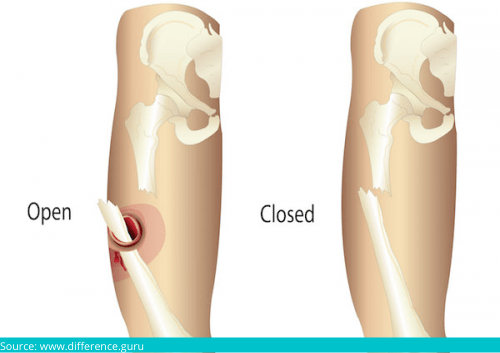
An open fracture, also known as a compound fracture, occurs when the skin breaks open to expose your soft tissues and bone.
A closed fracture occurs when the damage does not split the skin open.
Complete and incomplete fractures
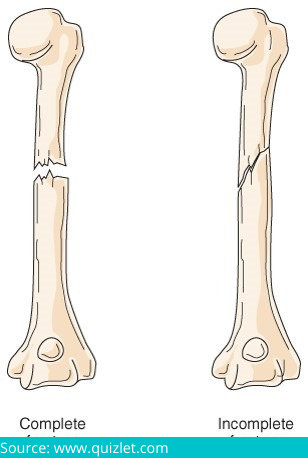
A complete fracture is a fracture in which the break travels all the way through the bone, splitting it into 2 or more pieces.
An incomplete or partial fracture is when a bone cracks but does not break completely.
Displaced and non-displaced fractures
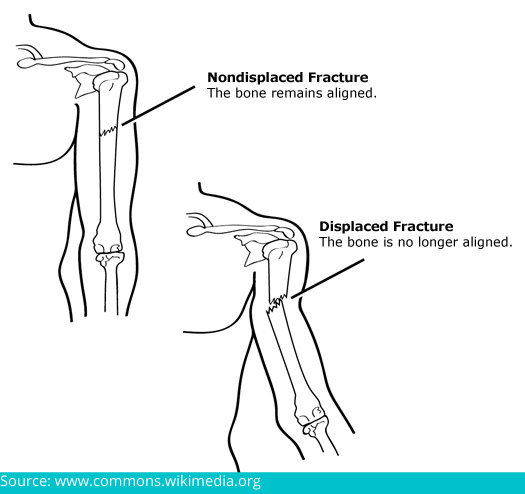
When a bone breaks and shifts out of position, leaving a space, it is called a displaced fracture. This damage frequently necessitates surgery to repair.
A non-displaced fracture is when a bone breaks but remains in its original position.
Fracture subtypes by characteristics of a bone fracture
Comminuted fracture: When your bone breaks into 3 or more pieces.
Compression fracture: When a bone is flattened or crushed. The spine is the most common location for this fracture.
Impacted fracture: When a segment of your bone pushes into another broken piece of bone by the force of an impact or injury.
Pathological fracture: When the bone has already been compromised byan existing disease or ailment(such as cancer). Dr. Saurabh Talekar, a highly experienced orthopedic doctor in Kandivali, Mumbai explains that pathological fractures can happen with little or no stress or force of impact.
Stress fractures: When repetitive strain or pressure causes a hairline crack in your bone. Athletes are prone to these types of fractures.
Transverse fracture: When the crack runs horizontally across the bone.
The Symptoms and Signs of a Fractured Bone
The following are symptoms and signs of a broken bone:
- Bruising or swelling around a bone
- A limb deformity
- Pain worsens when pressure is applied on the damaged part or it is moved.
- Inability to put any weight on the affected foot, leg, or ankle
- Function loss in the damaged site
- Bone protrudes from the skin in open fractures.
Fractures are usually the result of a blow, fall, blow, or other traumatic events.If you or your loved one is facing any of the symptoms, please speak with Dr. Saurabh Talekar, among the leading orthopedic doctors in Kandivali, Mumbai for a suitable treatment.
What are the treatments available for bone fractures?
The fundamental aim of treatment is to put the broken bone in the best possible position for natural healing. The bone must stay without movement during the healing period to grow together properly.
Immobilization can be accomplished in a variety of ways:
Sling and casts: These aids are used to keep a broken bone stable and supported as it heals. The degree of support provided by each differs; a sling offers less support, and the cast delivers the maximum support. Your health professional will decide the best option depending on the severity of the injury.
Traction: Traction is a type of immobilization that uses weights and pulleys to stretch the muscles surrounding a broken bone gently. Traction helps to align the ends of the bones and aids in healing.
Open reduction internal fixation (ORIF): You may require surgery for severe fractures. In this procedure, your surgeon will realign the fractured bone and fix it with the use of screws, rods, and plates to keep it in place while it heals.
Broken bones take 6-8 weeks to recover on average. You will have to alter your activities during this time to avoid moving the damaged area. You may need pain relievers for a few days, but the discomfort will likely subside before the bone heals entirely.
Dr. Saurabh Talekar, a prominent orthopedic doctor in Navi Mumbai, recommends physical therapy to help you regain strength and flexibility once you have healed.
Conclusion
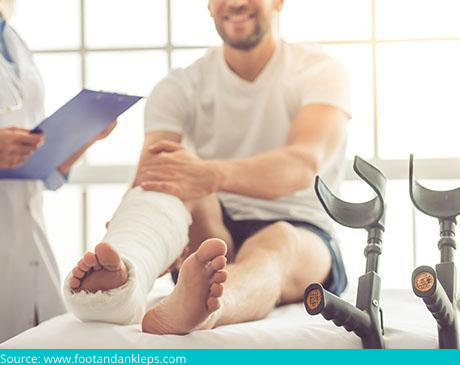
Bones, despite their strength, can break. A broken bone can be agonizing, and you should seek treatment as soon as possible. You will need to follow some self-care routine if you are unable to visit a doctor immediately. In most circumstances, you will require treatment before you can resume normal activities.
Most fractures may be identified by evaluating the injury and collecting X-rays. Please do not delay if you have signs like bluish discoloration, swelling, lack of movement in the injured area, needles, pins, numbness, or increasing pain. Contact Dr. Saurabh Talekar, a top-notch orthopedic surgeon in Mumbai, famous for his reliable and effective treatments.







